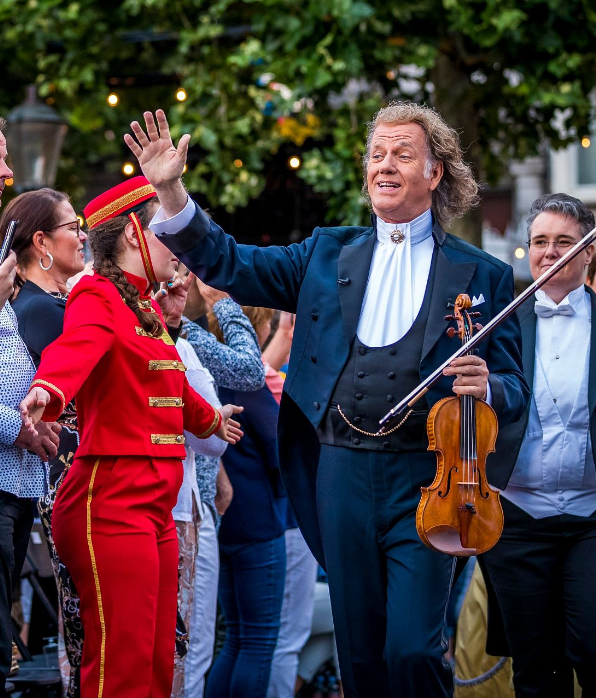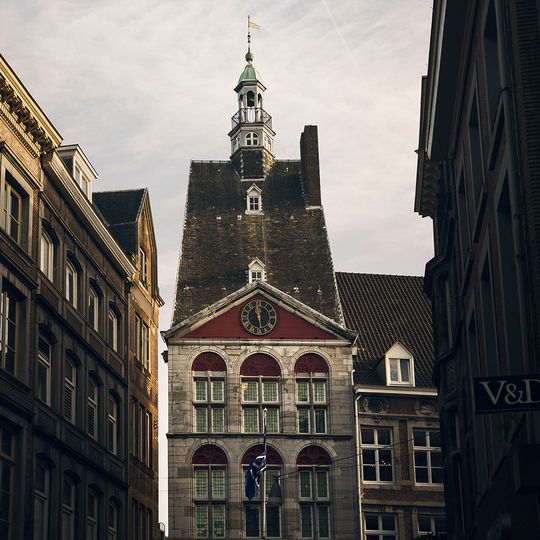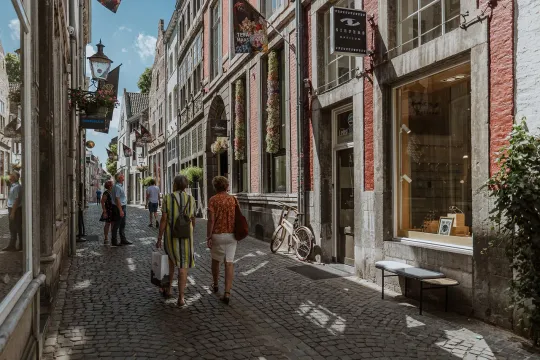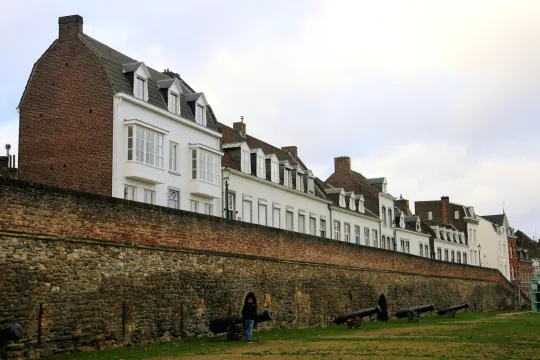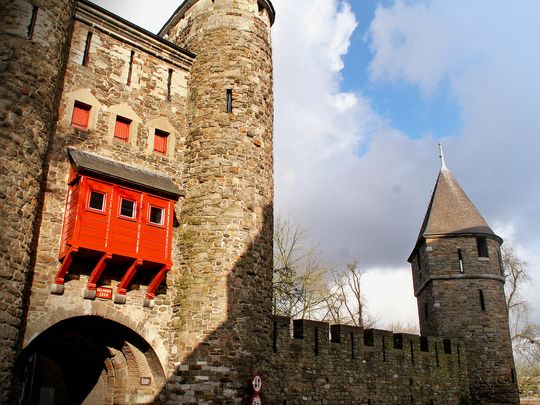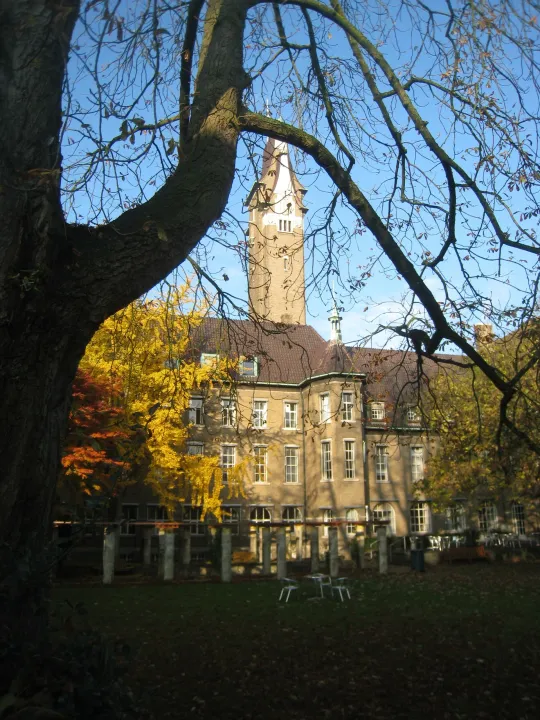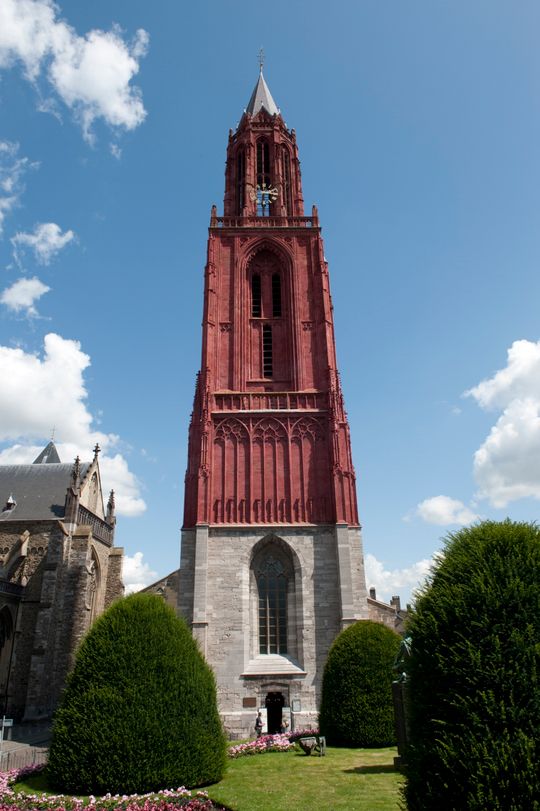André Rieu walking tour
Distance
3.0 km
Duration
1 hour
30 minutes
From Vrijthof square to Onze Lieve Vrouwe square, the treasure room, old city wall, and the Roman settlement. Be mesmerized by the most historic part of Maastricht. Experience the history of Maastricht and travel through André Rieu's life.
Visit the place where he spent his childhood, studied and started his career.
Length: 3 km.
Duration: 1,5 hours.
Enjoy!
Sights on this route
1
2
3
4
St Servatius Bridge (Sint Servaasbrug)
Sint Servaasbrug6221 ES Maastricht
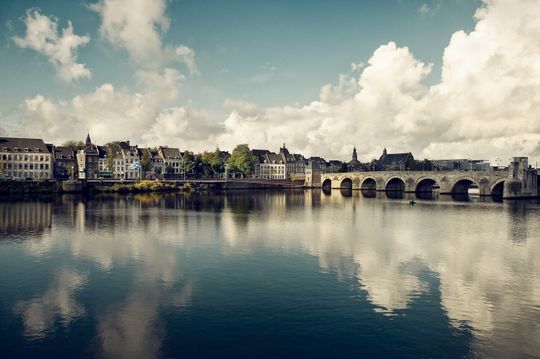
5
6
7
8
Natural History Museum
Natuurhistorisch Museum MaastrichtDe Bosquetplein 7
6211 KJ Maastricht

9
10
11
Basilica of St. Servatius and Treasury
Vlakbij het VrijthofKeizer Karelplein 6
6211 TC Maastricht

12
13
14
Directions
1
- Het Dinghuis | Maastricht Store
The walk starts at Het Dinghuis/ Maastricht Store, Kleine Staat 1. This historic Gothic court building was built between the late 15th and early 16th century. Turn left into Kleine Staat and take the second street left towards Maastrichter Smedenstraat. - Stokstraat Quarter
You are at the start of the Stokstraat Quarter. This was once an impoverished working-class district. Now it is the most luxury shopping area in Maastricht. You are currently standing on the old Roman castellum. Here, in the 4th century, the Romans built a fortified settlement encircled by a wall to secure their bridge over the Meuse River. They named their settlement Mosae Trajectum, nowadays called Maastricht.
Enter the first street on the right, Havenstraat, and go down the steps on the left towards storeys, Op de Thermen square. On the right you'll see contours in the pavement where the Gallo-Roman baths and corner towers were excavated. Continue straight through Morenstraat and turn right towards Stokstraat, the most expensive shopping street in Maastricht. Stokstraat was probably named after the prison that once stood here.
Most of the facades with their interesting stone plaques date from the 17th and 18th centuries and are representative of the characteristic Mosan Renaissance style of architecture. You will often come across this rich building style during this walk, identifiable by the steep pitched roofs, the brick facades, the freestone casings around doors and windows, and the decorative marl elements used in the facades. The steep pitched roofs are a reminder that Maastricht was a fortress city: the spacious attics were very well suited for storing food supplies during times of siege.
As a result of the Industrial Revolution in the 19th century, the city's population rapidly increased and the Stokstraat Quarter became a densely populated working-class district. - Basilica of Our Lady
At the crossing with Plankstraat stands the bronze statue by Dutch Sculptor Arthur Spronken. If you turn right into Plankstraat, you'll arrive at Onze Lieve Vrouwe square with the Basilica of Our Lady on the left. Its imposing westwork flanked by two round staircase towers make it look like a fortified castle with high wall and arrow slits. This basilica, made from millstone grit, was built before 1000 AD (the nave dates from the 12th century) and is one of the oldest churches in the Netherlands. The church has two crypts, one beneath the eastern choir and one beneath the westwork. The Romanesque choir, built in the 12th century, is a strinking element consisting of two storeys, each with its own colonnade. The gilded capitals of the columns are decorated with carvings representing scenes from the Bible and mythological tableaus.
Exit the church via the Star of the Sea chapel, turn left onto the square and turn left again. You are now walking along the south facade of the church towards the Meuse. On the corner of Graanmarkt and Stokstraat stands one of the few remaining guardhouses built in 1786. The guardhouse was built to serve the medieval Onze Lieve Vrouwe city gate, which was demolished in 1868.
Continue walking until you reach the Maasboulevard. From here you can see the Wyck district on the other side of the Meuse with its own ramparts which date back to 1229. Along the banks of the Meuse you can see the Waterpoortje water gate, and to the right the Maaspunttoren tower. These are all remnants of the old fortress. In the past, the quay wall also functioned as a defensive wall. To the right of this tower, you can see the modern Céramique district, with its residential apartments, office buildings, and shops as well as the Bonnefanten museum and Centre Céramique. The steel suspension bridge to your right links the Céramique district to the historic heart of Maastricht. - St. Servatius Bridge
On your left is the St. Servatius Bridge. After the original Roman bridge, which was located more to the south, fell into disuse, a wooden bridge was built where the historic stone bridge now stands. This wooden bridge collapsed in 1275 and construction of the St. Servatius Bridge took place from 1280 to 1289. The bridge originally had nine arches built of freestone as well as a wooden arch on the side where Wyck is located. Until the 19th century, this was the only bridge linking the two sections of the city. - Onze Lieve Vrouwewal
Walk back to Graanmarkt and go up the stairs of the Onze Lieve Vrouwewal on the left. This wall was built in 1229 as part of the first medieval city wall and was also part of the second city wall built in 1294. Go down the stairs at the end of the city wall. - Helpoort
You are now at the Helpoort gate. This is the oldest city gate in the Netherlands. You can see the groove running along the sides of the arched construction, which was used for lowering the portcullis originally present in the gate. Above the gate entrance, you can see an extension to the structure, in the floor of which there were once holes that could be used for hurling projectiles at the enemy from above.
Across from the Helpoort gate is the Pesthuys, an old watermill that was built in 1775 and served as a paper mill. The name of the mill, meaning Plague House in Dutch, is derived from the plague victims who were hospitalized nearby. Pass the Pesthuys on the right and cross the Jeker river. - Pater Vincktoren
Immediately turn right after crossing the bridge. The tower you see is the Pater Vincktoren. Here you can see the remains of the second city wall as well as part of the first city wall connecting the tower to the Helpoort. Next to the tower on the left you can see the former Faliezusters or Veiled Sisters cloister. These cosy houses with their red and white shutters are what remains of the cloister. They were built in 1647 in characteristic Mosan Renaissance style. The Faliezusters (an order of nuns) lived in accordance with the rules of the Franciscan monks, who lived in the large monastery located behind the cloister.
As you exit the park you'll see the Regionaal Historisch Centrum voor Limburg (Regional Historic Centre of Limburg) on the right. this modern building was built in 1995 and was designed by R. van Roosmalen. It demostrates the coherence between the old and new architecture. Continiue on Begijnenstraat and turn right into the lovely St. Pieterstraat.
Immediately on your right, you'll see a striking architectural reminder of the first city wall in the facade of the former monastery. Cross the street and before turning left into Lang Grachtje, take a moment to look at the Gothic Oude Minderbroederskerk (the church of the Old Friars Minor) that was built in the 14th century, located a little further on. Built with blocks of marl, it has an imposing set of buttresses and arches on both sides.
Across from this church, stands an 18th-century Walloon church. After the city was conquered in 1632 by Frederick Henry, various churches were designated to be used for Protestant church services. This was also the case for the St. Hilarius Chapel, claimed by the Walloon Reformed Church. In 1732, the chapel was demolished and replaced by the present church. Lang Grachtje is an extension of the first city wall built in 1229 and in some places you can still see remains of the defensive corridor and embrasures.
Turn right into Hilariusstraat in front of house number 12. This part of the city has many charming streets. Turn left into Tafelstraat with its historic buildings. At the end of the street is Grote Looiersstraat with its stately homes. Here where the five streets meet, once stood the Looierspoort city gate. Grote Looiersstraat is named after the leather tanners who once practiced their craft here. At that time, a branch of the Jeker river ran right down in the middle of Grote Looiersstraat. In 1897, this branch of the river disappeared beneath the road. - Natuurhistorisch Musuem (Natural History Museum)
Not on the route, but a good tip: Natuurhistorisch Museum is located at the end of Grote Looiersstraat. This museum is dedicated to the natural environment of South Limburg. Some of the most famous items on display include fossils of an enormous Mosasaurus as well as giant turtles found in the layers of marl beneath the St. Pietersberg hill.
Turn right into Achter de Molens and immediately cross the street. On your left you'll see a beautiful stone plaque and a chronogram that decorate the former Hertogsmolen mill. Continue straight on into Klein Grachtje, which parallels the first city wall.
Continue down Verwerhoek and turn left into Lenculenstraat at the end of the street. Further along this street, the house with was built in 1690 as a Protestant orphanage and now houses the Maastricht Theatre Academy. - Old Governement
If you turn right into Bouillonstraat, you'll see the old Governement provincial building further down on the right. This building was constructed between 1930 and 1935 and was decorated by artists from Limburg. It now houses the Faculty of Law of Maastricht University. Cross Bouillonstraat and walk up the hill to Sint Servaasklooster. On the right is the guardhouse, built in 1770, of the old provincial government building where the posts on both sides of the door are decorated with victory symbols.
As you continue up the hill, you pass several beautiful 18th-century canon houses, formerly owned by the chapter of St. Servatius. You are now at the Hendric van Veldekeplein square, where you will see a ronze statue of Henric van Veldeke, the first Dutch poet, made by Charles Vos in 1934. Veldeke is best known for the legend of St. Servatius, which he wrote around 1160. The building on the right side of this square is the former city palace of the high provost of the chapter of St. Servatius. - Sint Janskerk
From this square, you have a beautiful view of the Sint Janskerk (St. John's Church) with its 70 m-tall red tower. This Gothic church, dating back to the 14th century, was originally built as a baptistery and parish church for the chapter of St. Servatius. Since 1633, the Church of St. John has been owned by the Dutch Reformed Church, and since 1987 it has been used by the 'Reformatorische Kerkgemeenschap Maastricht', a federation between two different branches of the Dutch Reformed Church. - The Basilica of St. Servatius
On the left dates back to 530 when it was just a small crypt church. The construction of this impressive church started in ca. 950. Extensions were regularly made to the church until the 15th century. It is the only church in the Netherlands built over the tomb of a saint, St. Servatius, the first Bishop of Maastricht and the patron saint of the city. As a result, the church also became a pilgrimage destination. The massive westwork (1200) has a fortress-like exterior. If you continue walking, the entrance of the church is located on the other side on Keizer Karelplein square.
If you go down the stairs between the Basilica of St. Servatius and the Church of St. John, you'll arrive at Vrijthof square.
To the left of the Basilica of St. Servatius is the former main guard house where the keys of all city gates were kept at night. - Fotomuseum aan het Vrijthof
On the right is the Fotomuseum aan het Vrijthof. This building was formerly owned by the chapter os St. Servatius and later by the Spanish and Brabant Gouvernement provincial governments and the court for the dukes of Brabant and the dukes of Burgundy. The emperors Charles V and Philip II also stayed here when they visited the city. The building dates to the 14th century and is the oldest building in the city. Now, it is the Fotomuseum aan het Vrijthof and presents three to four new exhibitions every year.
Cross the square diagonally to the left and exit Vrijthof square on the café terrace side. - Boekhandel Dominicanen
Turn right into Grote Staat. Turn left immediately. On your right is the Dominican church, now the Boekhandel Dominicanen bookshop. This church dates from 13th century and was built entirely of marl on a base of millstone grit. The interior wall painting dating from 1337 is of great cultural and historical significance. In 2006, the church was completely restored, and now houses a bookshop. Go back to Grote Staat and walk back to 't Dinghuis in Kleine Staat. This marks the end of this walk.
14
